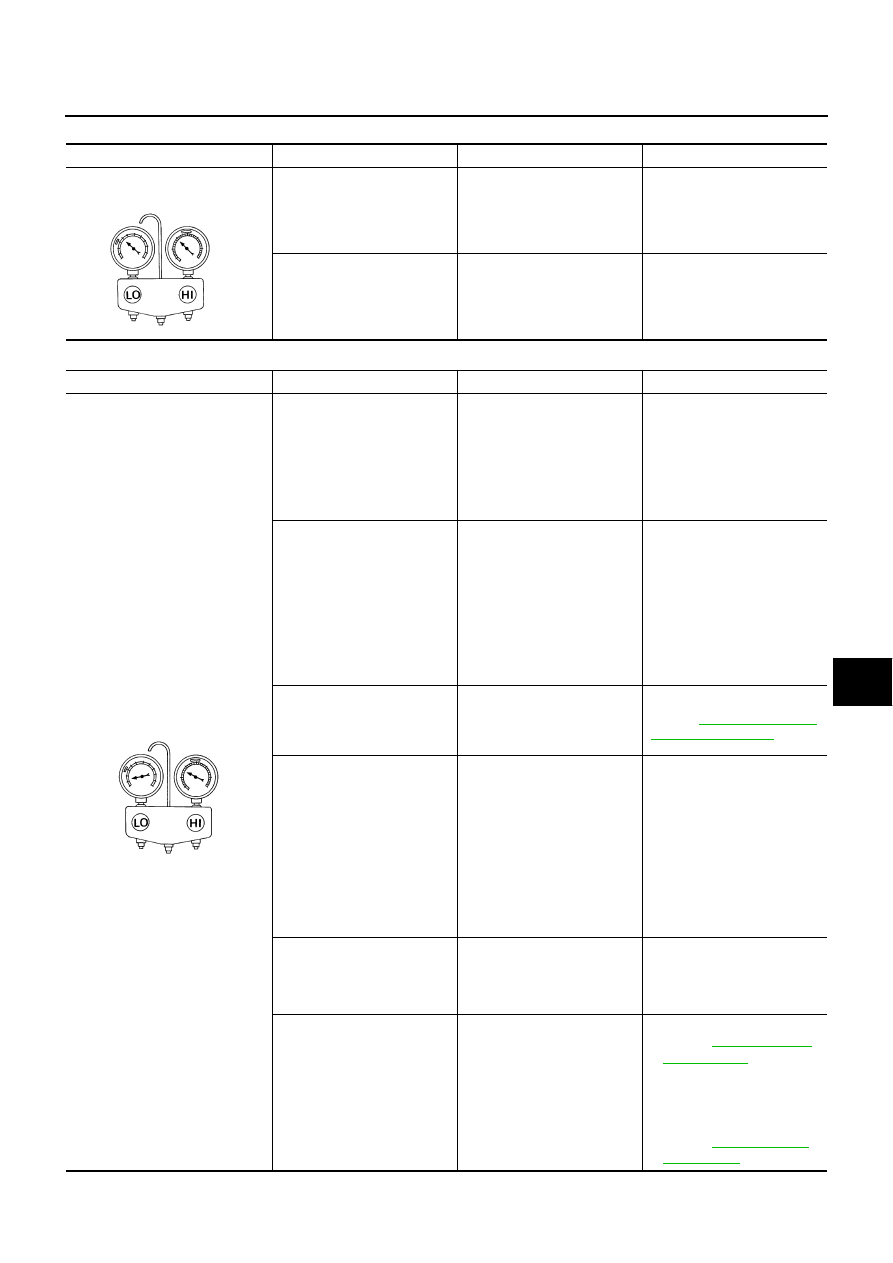Nissan Murano Z50 (2006 year). Manual - part 8

TROUBLE DIAGNOSIS
ATC-89
C
D
E
F
G
H
I
K
L
M
A
B
ATC
Revision: 2006 August
2006 Murano
High-pressure Side is Too Low and Low-pressure Side is Too High
Both High- and Low-pressure Sides are Too Low
Gauge indication
Refrigerant cycle
Probable cause
Corrective action
High-pressure side is too low and
low-pressure side is too high.
High- and low-pressure sides
become equal soon after com-
pressor operation stops.
Compressor pressure opera-
tion is improper.
↓
Damaged inside compressor
packings.
Replace compressor.
No temperature difference
between high- and low-pres-
sure sides.
Compressor pressure opera-
tion is improper.
↓
Damaged inside compressor
packings.
Replace compressor.
AC356A
Gauge indication
Refrigerant cycle
Probable cause
Corrective action
Both high- and low-pressure sides
are too low.
●
There is a big temperature
difference between liquid
tank outlet and inlet. Outlet
temperature is extremely
low.
●
Liquid tank inlet and expan-
sion valve are frosted.
Liquid tank inside is slightly
clogged.
●
Replace liquid tank.
●
Check lubricant for contami-
nation.
●
Temperature of expansion
valve inlet is extremely low
as compared with areas
near liquid tank.
●
Expansion valve inlet is
frosted.
●
Temperature difference
occurs somewhere in high-
pressure side.
High-pressure pipe located
between liquid tank and
expansion valve is clogged.
●
Check and repair malfunc-
tioning parts.
●
Check lubricant for contami-
nation.
Expansion valve and liquid
tank are warm or slightly cool
when touched.
Low refrigerant charge.
↓
Leaking fittings or compo-
nents.
Check refrigerant for leaks.
Refer to
There is a big temperature dif-
ference between expansion
valve inlet and outlet while the
valve itself is frosted.
Expansion valve closes a little
compared with the specifica-
tion.
↓
1. Improper expansion valve
adjustment.
2. Malfunctioning expansion
valve.
3. Outlet and inlet may be
clogged.
●
Remove foreign particles by
using compressed air.
●
Replace expansion valve.
●
Check lubricant for contami-
nation.
An area of the low-pressure
pipe is colder than areas near
the evaporator outlet.
Low-pressure pipe is clogged
or crushed.
●
Check and repair malfunc-
tioning parts.
●
Check lubricant for contami-
nation.
Air flow volume is not enough
or is too low.
Evaporator is frozen.
●
Check intake sensor circuit.
Refer to
.
●
Replace compressor.
●
Repair evaporator fins.
●
Replace evaporator.
●
Refer to
AC353A